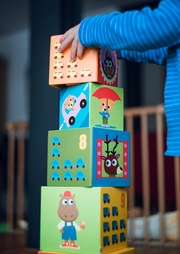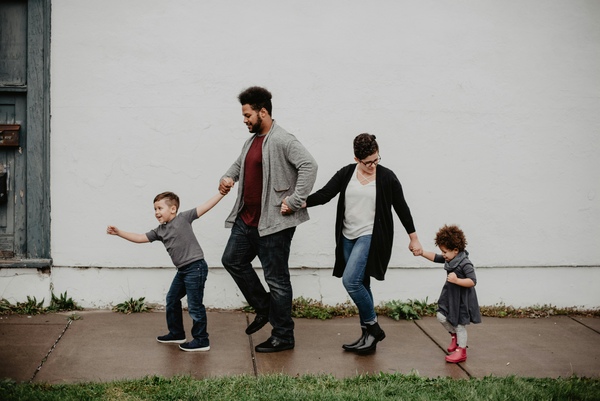10 Top Safety Tips for Families with Young Kids
Young children are naturally curious and eager to explore the world around them, but their lack of awareness about potential dangers means parents need to be extra vigilant. Creating a safe environment at home and teaching children essential safety practices is crucial for their well-being.
This guide presents essential safety tips for families with young kids, providing practical advice on how parents can proactively protect their children. Whether it’s securing hazardous items, teaching safety skills, or maintaining secure sleeping arrangements, these measures will help you build a safer space for your family.
1. Childproofing Your Home
Your home should be a haven where children can explore and play without constant risk. Childproofing involves systematically securing potential hazards in each room. Install child safety locks on cabinets and drawers containing sharp objects, medication, and cleaning products. Anchor heavy furniture like bookshelves and dressers to prevent tipping. Cover electrical outlets to deter curious little fingers. Make sure cords from blinds and curtains are kept out of reach, as they can pose a strangulation risk. By thoroughly inspecting and childproofing your home, you reduce the likelihood of accidents.
2. Learning First Aid & CPR
Accidents can happen at any time, and knowing basic first aid and CPR can be lifesaving. Courses that are focused on first aid & CPR for parents teach vital skills for responding to common emergencies like choking, burns, or severe allergic reactions. These classes often cover both infant and child CPR techniques, providing parents with the confidence to act quickly and appropriately in emergencies. Consider attending a class with your partner or other caregivers so that everyone in your child’s life is prepared. Practicing regularly will keep these skills sharp.
3. Kitchen Safety
Kitchens are full of potential hazards for children, including sharp knives, hot surfaces, and cleaning chemicals. Keep knives and other sharp utensils securely stored out of reach. Use childproof locks on cabinets containing cleaning supplies. When cooking, use the back burners and turn pot handles inward so children can’t reach them. A stove guard can prevent small hands from touching hot surfaces. When kids are helping at the sink or counter, ensure they have safe stepping stools. Finally, never leave children unattended in the kitchen, and be mindful of items like small refrigerator magnets that could pose choking hazards.
4. Water Safety
Water poses numerous risks for children, from drowning in bathtubs to accidents in pools or natural bodies of water. Always supervise children closely around any water source, and never leave them unattended in the bathtub. Consider using child safety locks on toilets and blocking access to pools with a secure fence and locked gate. Enrolling children in basic water safety classes will teach them skills like floating or treading water, which could be life-saving in an emergency. Pool alarms and safety covers add extra layers of protection.
5. Safe Sleeping Practices
Ensuring safe sleeping arrangements is vital for reducing the risk of Sudden Infant Death Syndrome (SIDS) and other sleep-related injuries. Babies should sleep on their backs in a crib with a firm mattress, free from loose bedding or toys. Avoid using bumper pads or pillows, which could obstruct breathing. Room temperature should be comfortable and not too warm. Ensure the crib meets safety standards and hasn’t been recalled. As your child grows, make sure they transition to an age-appropriate bed with guardrails to prevent falls.
6. Outdoor Safety
Playing outside is crucial for a child’s development, but the outdoors present unique hazards that require careful supervision. Sunburn is a significant risk, so apply sunscreen with at least SPF 30 on all exposed skin and provide hats and sunglasses for added protection. Helmets are essential for activities like biking and rollerblading, and protective pads minimize injury risk. Children should understand traffic safety rules, like using sidewalks and crossing at crosswalks. Teach them to never talk to strangers or go anywhere alone. Additionally, be mindful of plants and insects that could cause allergic reactions or nasty bites.
7. Fire Safety and Emergency Plans
Fires and other emergencies can be catastrophic, but having a family emergency plan can mitigate their effects. Install smoke detectors on every level of your home and test them monthly. Fire drills are invaluable in teaching children to evacuate quickly and safely. Develop a clear escape plan with designated routes and a meeting point outside. Educate your kids about “stop, drop, and roll” to prevent burn injuries if their clothing catches fire. In addition to fire safety, identify a plan for other emergencies like earthquakes or severe storms.
8. Safe Toy Selection and Usage
Toys are essential for learning and play, but choosing age-appropriate toys is vital for safety. Check the recommended age range on packaging and avoid toys with small parts that can be choking hazards. Inspect toys for damage regularly, especially those with batteries or electrical components. Be cautious with toys containing magnets, as these can cause serious internal injuries if swallowed. Encourage proper use, like wearing safety gear for bicycles or not sharing mouth-operated toys to prevent the spread of germs.
9. Car Safety
Proper car safety practices can significantly reduce the risk of injury in an accident. Children should always ride in a car seat or booster seat appropriate for their age and weight. Rear-facing car seats are safest for infants, and forward-facing seats should be used as kids grow. Ensure the seat is securely installed and that the harness fits snugly. Older children should always wear seatbelts. Additionally, keep car doors locked to prevent kids from wandering off, and never leave children unattended in a car due to the risk of heatstroke.
10. Stranger Danger and Internet Safety
Educating children about stranger danger is critical, both in person and online. Teach them to never accept gifts or rides from strangers and to never give personal information to anyone they don’t know. Establish rules for internet use, such as not sharing personal details like addresses or phone numbers online. Monitor their online activities and consider parental control software to block inappropriate content. Make sure children know they can always come to you if something or someone makes them uncomfortable.
Creating a Safe and Nurturing Environment
Creating a safe environment for young children requires vigilance, education, and ongoing preparation. Parents need to be proactive by childproofing their homes, learning emergency skills like first aid and CPR, and developing safety routines both indoors and outdoors. Equally important is teaching children to recognize potential hazards and act responsibly. Safety is an evolving process, and regularly reviewing and updating your strategies will help you keep pace with your child’s growth. By making safety a top priority, families can cultivate a secure and nurturing environment where children can thrive.





